I spoke to Knitwear Designer, Kate Davies, owner of Kate Davies Designs (KDD and Co) who established her business in 2010, after a stroke ended her career as a literary academic at the age of 36.
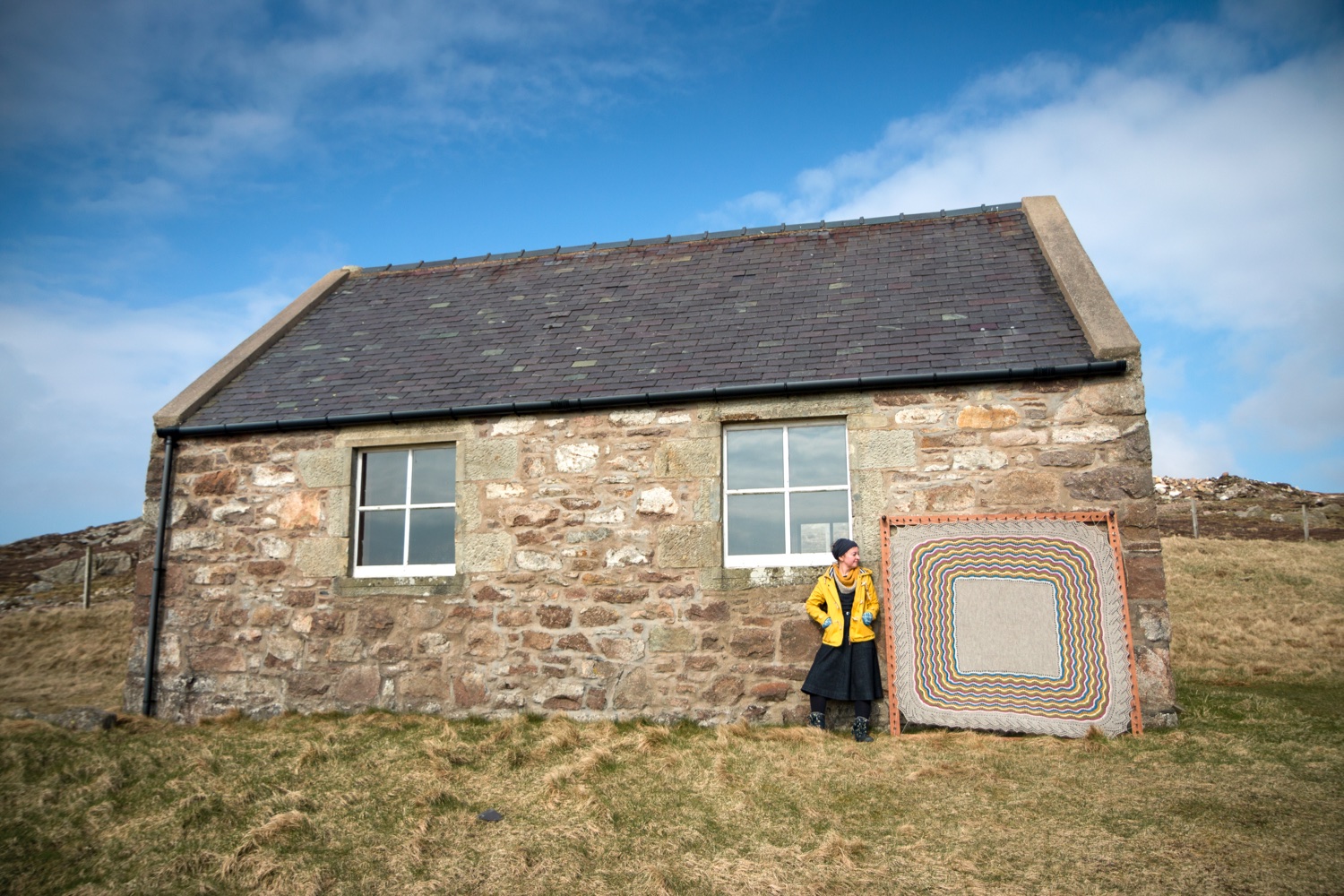
Kate’s journey to becoming a Knitwear Designer
While recovering, Kate supported herself by designing digital patterns for hand-knitting, established an independent publishing company, and began to produce books that combined her skills as an author and designer.
Shetland has a special place in Kate’s heart and her first publication was inspired by the isles’ heritage colours and textures. Since the publication of Colours of Shetland 16 books under the KDD and Makadu imprints have been published.
Kate is a champion of the MAKE manifesto and one of the twelve members of the Scottish Government’s Business Leadership Group, encouraging other businesses to commit to the ideals of fairness and equality behind the Scottish Business Pledge.
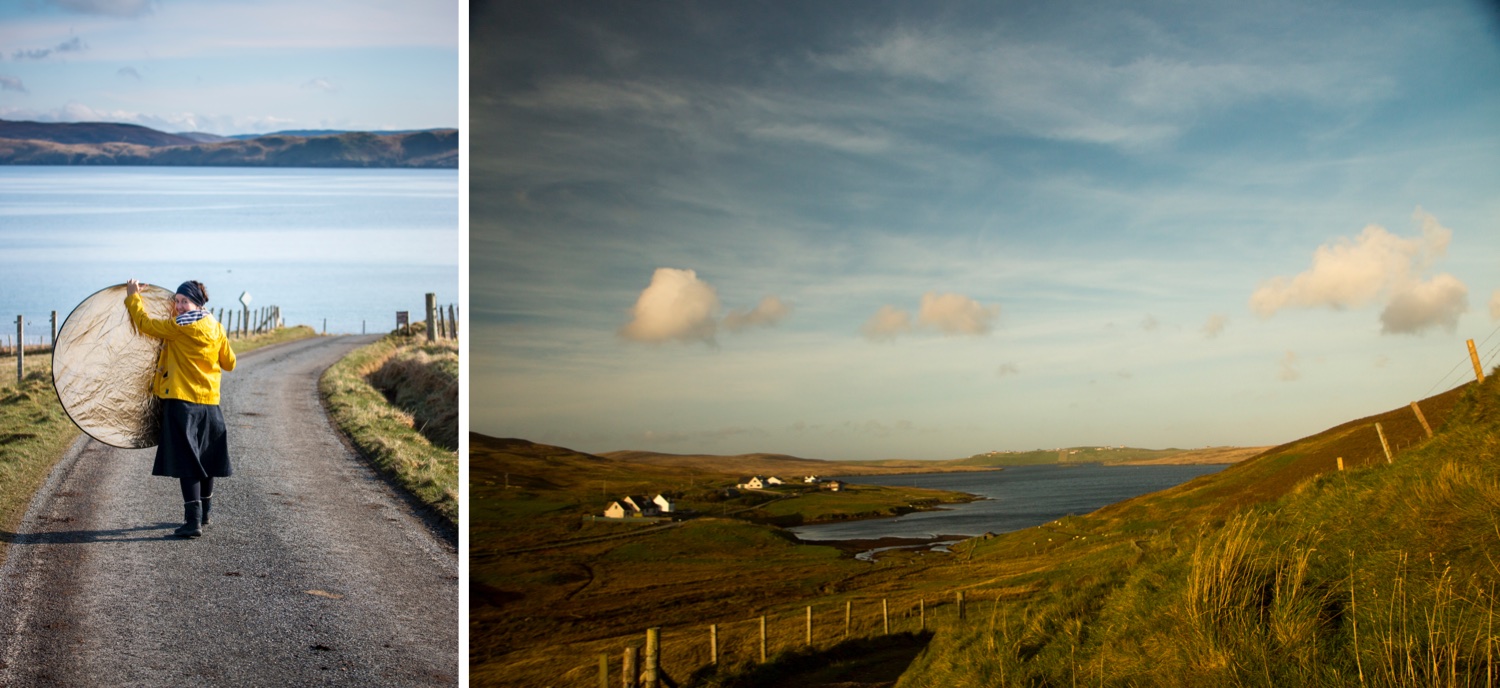
Here are the highlights from my interview with Kate, an inspiring Knitwear Designer
When did you first come to Shetland and what were your first impressions of the place?
I suffered a major stroke in 2010 (due to a hole in my heart) and when I first came to Shetland, I was still recovering (and learning how to recover). I’d agreed to research and write a piece about the history of Shetland lace for a magazine: the first paid commission I’d felt able to take on since my stroke. My first visit was in early January – perhaps not a time of year you’d think to see Shetland at its best, but I immediately fell for the place. For me, there’s nothing like an exhilarating, blustery, cold weather walk, and Shetland in January is certainly the place for that! I travelled to Yell and Unst, astounded by the beauty of the low, pale winter light, the varied colours of beach and moor, and the rapid transformation of the landscape by flurries of snow.
One of the very first things I noticed after getting off the boat in Lerwick was how bins and garden furniture were tethered down outdoors with nets and buoys. I enjoyed the jolly visual effect of these objects – their bright turquoises and pinks – and they immediately struck the then city-dwelling me as an interesting example of the distinctive character of the place: its proximity to, and overlapping with the world and culture of the sea; the simple realities of island weather; and the everyday resourcefulness of the local community. I imagine that to most Shetlanders the practice of netting wheelie bins is so routine and ordinary as to be completely unnoticeable, but I recall just how intriguing and distinctive it seemed to a land- lubbing urban outsider!
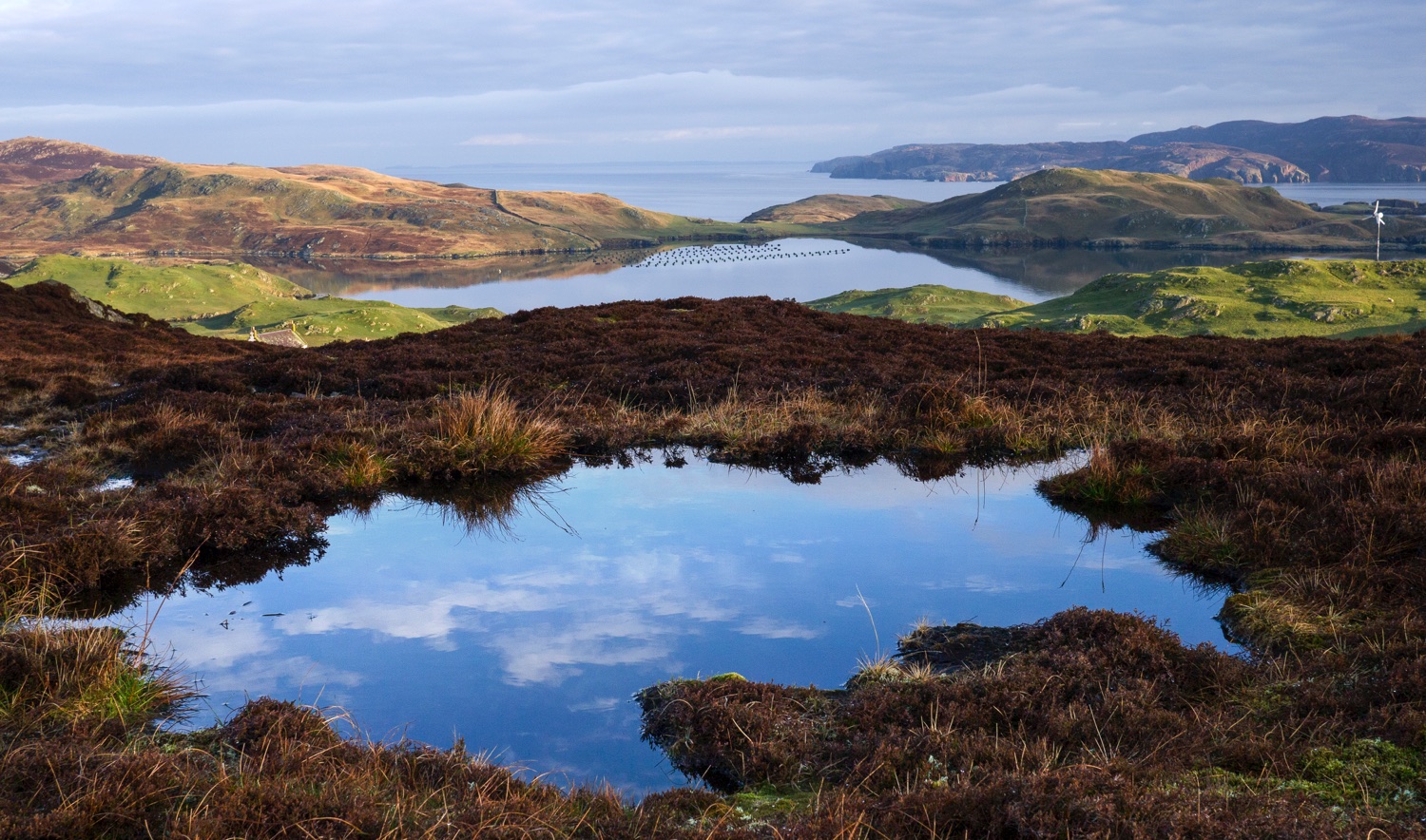
What makes Shetland special and how does it inspire you as a Knitwear Designer?
So much about Shetland is inspirational – the landscape, its people, the islands’ history, culture and sense of community – all of which are extraordinarily special and very distinctive.
As a knitwear designer, it is impossible not to be inspired by Shetland textiles and their history, and it is perhaps the knitters of Shetland that inspire me most of all. I’m also a huge fan of the work of many Shetland writers, perhaps especially poets like Stella Sutherland, Rhoda Butler, Christine de Luca, and Raman Mundair. And as someone with a more general interest in sustainability – from both an individual and a business point of view – there’s so much to be inspired by in the culture of Shetland crofting, as well as the enterprising creative communities that thrive all over the islands.
Shetland’s creativity is closely connected with the landscape and weather, both of them being a constant source of inspiration. What impact did Shetland have on your work as a Knitwear Designer?
There’s a lot that I might say about the distinctive qualities of Shetland’s landscape but two things immediately strike me: liminality, and movement. By liminality I mean that, as a group of islands, and as a fairly watery place, Shetland is somewhere that’s more than ordinarily defined by its edges. If you walk in the Shetland landscape, you are continually encountering endings and beginnings of different kinds.
And that sense of movement is just as important: because Shetland’s weather, and its light, shifts so very rapidly, the landscape itself often seems to be in a state of constant flux. The effects of the light in Shetland, and the transitions between one state and another, can be extraordinarily beautiful, perhaps even more so because they are so fleeting. Strangely, I find the movement in the Shetland landscape, as well as its edges, endings and beginnings, extremely grounding and reflection- prompting – it’s definitely a landscape full of creative inspiration!
In Handywoman you describe how your post-stroke way of working had to change; did Shetland play a role in this? Did it perhaps help you to rediscover and embrace a reduced pace of working; something many of us seek these days?
Yes, I found Shetland inspiring in so many ways and without, I think, knowing that they were doing so, many of the Shetland women I met and developed friendships with helped me enormously. In the first few years after my stroke, one of the things with which I really struggled was simply accepting how brain injury had changed my body: my left side was very weak, my balance was significantly affected, and I suffered from debilitating episodes of neurological fatigue during which I couldn’t do much at all. I’d been a busy, physically capable, energetic person to whom many things came easily, and I suddenly had to accept the necessity of slowing down, while also having to learn that endurance was about so much more than bodily strength.
In Shetland, I met many women for whom strength seemed to be far less about the physical body, or conventional measures of worldly success, than a general attitude of enduring and getting on with life within one’s means. I don’t think it’s any coincidence that all of these women were talented knitters – for whom doing things well is generally more important than doing things quickly (however fast you knit, it’s going to take some time).
These women also had a sense of humour – a quality that shouldn’t be underestimated! Learning how to endure; accepting not just the necessity, but the value of doing things slowly; and managing to retain a lightness of heart while doing so were three lessons I took away from my time and work in Shetland. I’m now a great fan of slowness, and have found many benefits in it, perhaps especially creatively. I also think that since we are all going to be slow at some point in our lives, it’s probably important to learn how to thrive within our own slowness sooner rather than later!
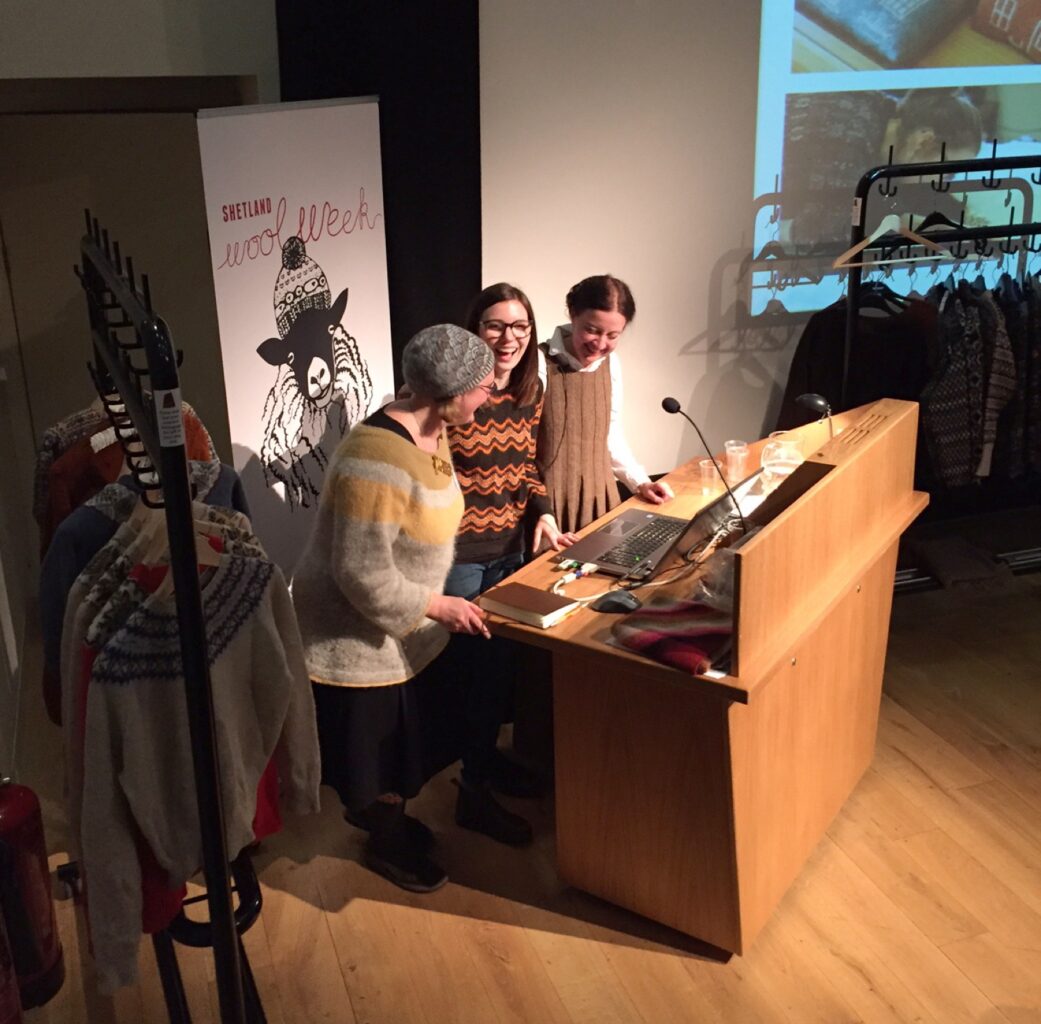

What is your favourite place in Shetland, and do you have a favourite memory from your visits?
I really love Whalsay. But as someone with poor balance and a tendency to be seasick, I love the boat to Whalsay a little less. I once spent a wonderful few weeks in Vementry, while I was working on a project, and I think that some of my fondest Shetland memories are just about watching the light change and move across the landscape from the stoop of the wee house there that I’d rented.
Over the years you have been coming to Shetland, have you seen many changes and developments in the Shetland textile industry? And what do you think the future looks like for this sector?
I don’t think anyone involved in the world of Shetland wool and textiles could argue that the past decade hasn’t been transformative! Digital technology, the online knitting community, and Shetland’s own enterprising knitters have brought the islands to the world while important local initiatives like Shetland Wool Week have done an amazing job at bringing the world to Shetland. It’s been wonderful to see the Shetland word spreading, as knitters all over the globe learn more about what makes the wool and textile history of these islands so very special.
Most inspiring to me, though, is the example of contemporary Shetland women, such as Donna Smith, who has developed an admirably joined-up approach, with the production of yarn from her own sheep alongside her own beautiful designs, or talented young entrepreneurs like Terri Malcolmson, who are carrying the practices and aesthetics of Shetland knitting forward into the future, while respecting the heritage of the craft.
You and your team run a very successful business; do you have any advice for those who are keen to become a Knitwear Designers or start their own business?
My only piece of advice would be: You do You. That is, it really doesn’t matter what everyone else is doing, or what everyone else assumes you should be doing: the most important thing is that you find what is important to you, what works for you, what you do well, and then you do that. One other thing I’d add is that I think there’s far too much emphasis on continual growth for businesses small and large. I think that figuring out what’s enough is actually much more important for running a business that’s sustainable as well as successful.
And lastly, what does your ideal day look like as a Knitwear Designer?
I know I’m really lucky in that every day I generally get to do at least some of the things that I love most: taking long walks in the hills, reading, writing, developing creative ideas, and knitting. If the day were very special then it would include swimming in the sea (perhaps off Shetland) followed by a tasty meal cooked by my husband Tom, including some kind of nut-based treat (I love all nutty cakes!)
Thank you so much to Kate for sharing how she built a successful (and sustainable) Knitwear Design Business. This conversation was filled with so many wonderful thoughts and reflections.
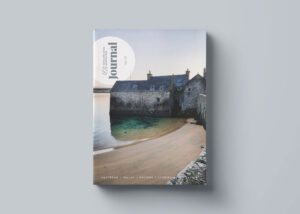
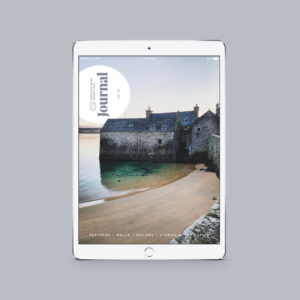

Two of my favourite women in one go! You and Kate have both had to face major challenges and learned important things about yourselves. Looking forward to Vol. 5 when it comes out.
Thank you for you kind words Mary, I’m really glad you enjoy the journals. You’re right, I’ve learned a lot about myself on this journey and continue to do so. I’m feeling grateful for all of this too.
I love your journals. They are inspiring and always bring a fresh face to Shetland and its many possibilities. I love that they include walks and cover areas of Shetland that aren’t so well known. Thank you for continuing with this. I look forward to Volume 5!
Thank you Linda, it’s so encouraging to hear your lovely comments about the journal. Volume 5 is underway now, I’m hoping it’ll be out later in the autumn.